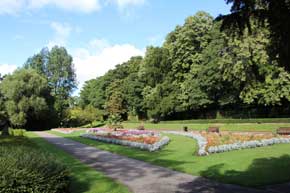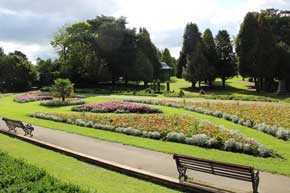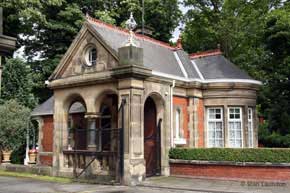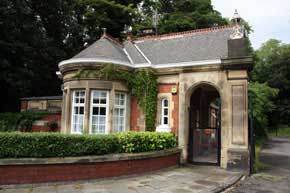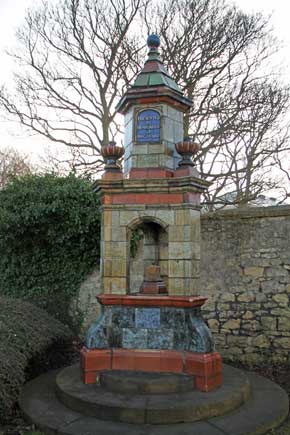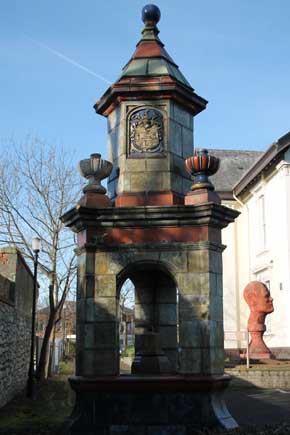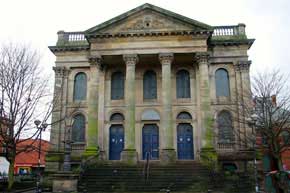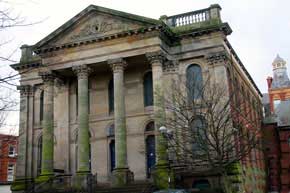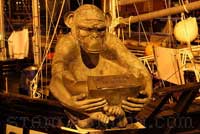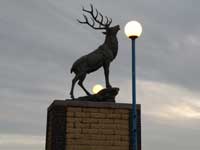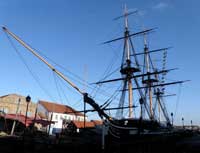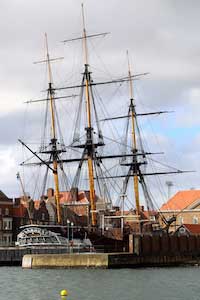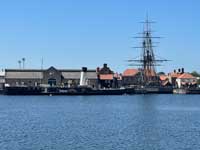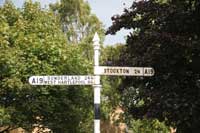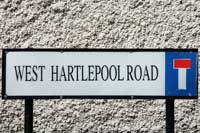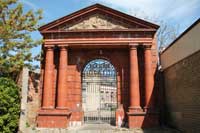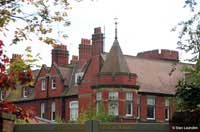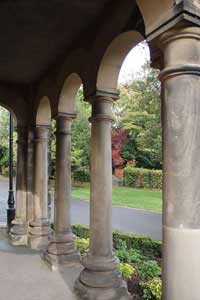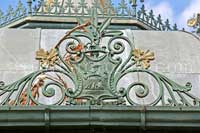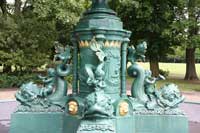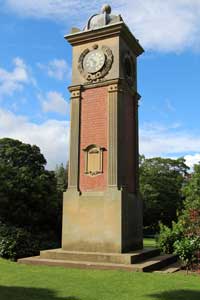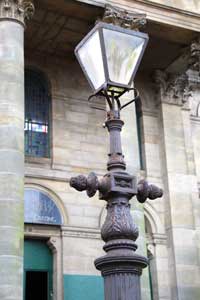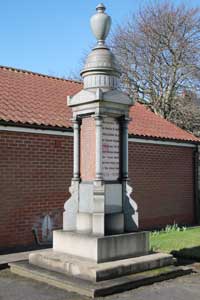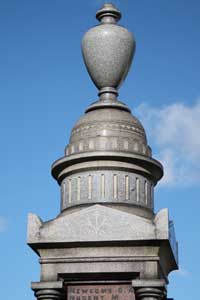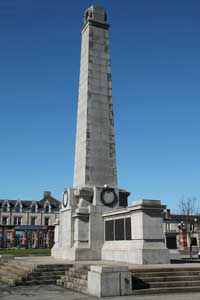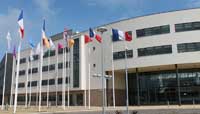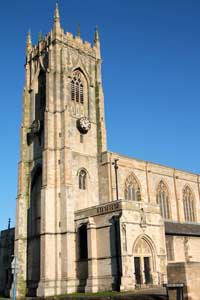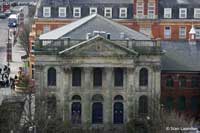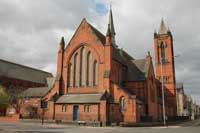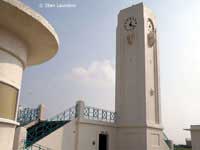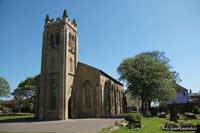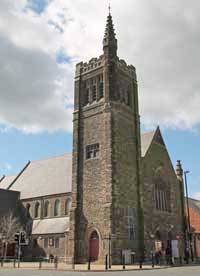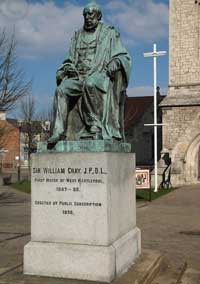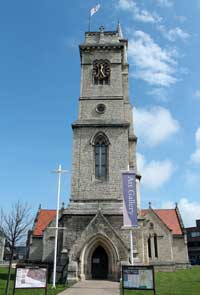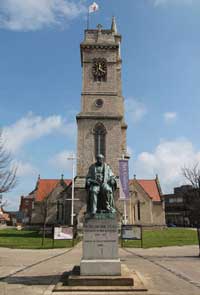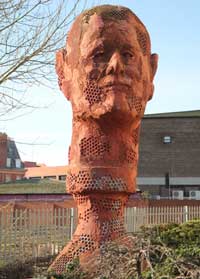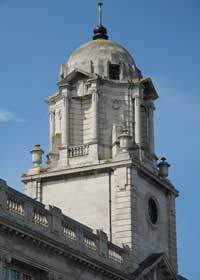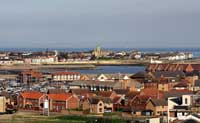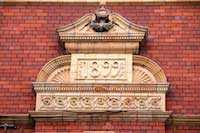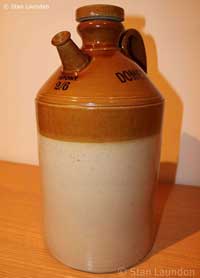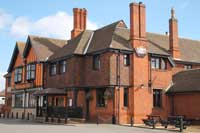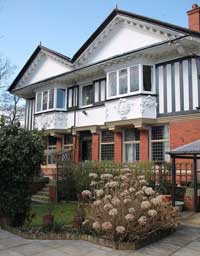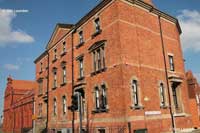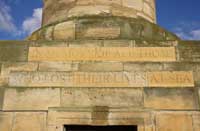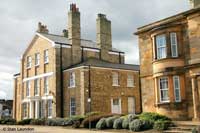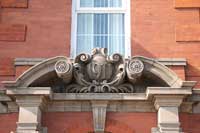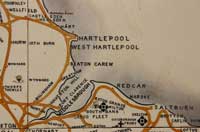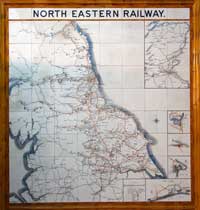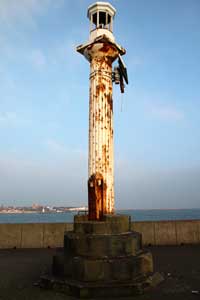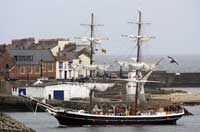HARTLEPOOL - FORMERLY WEST HARTLEPOOL

The Make A Wish For The Monkey statue is in Hartlepool Marina, near the lock gates. Coins thrown into the monkey's lap are donated to Alice House Hospice in the town.
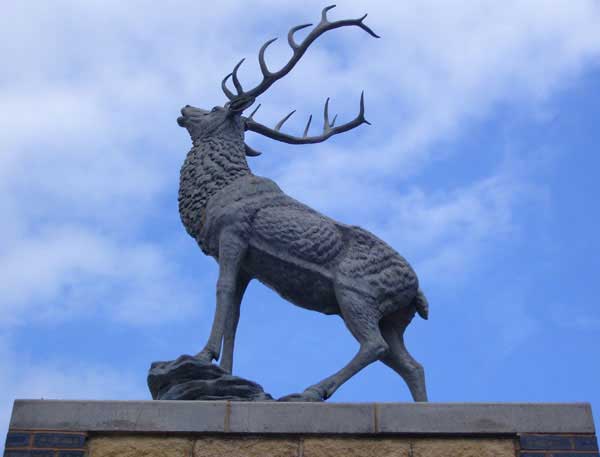
The name of Hartlepool, according to the author Sir Cuthbert Sharp, comes from origins unknown. But in the time of Bede, the old town on the peninsula, was called Heruteu - the island of the stag. By mediaeval times, the town was known as Hertepol - the pool of the hart or, hart in the pool - becoming Hart-le-Pool.
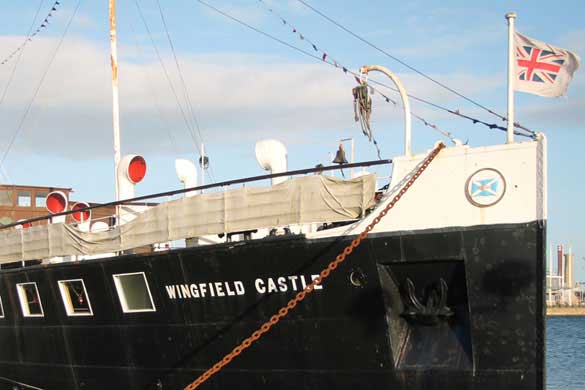
The PSS Wingfield Castle, and her sister ship the Tattershall Castle, were delivered to the London & North Eastern Railway (which later became the British Transport Commission) and was used as a ferry on the River Humber between Hull and New Holland. During the second world war, both acted as waterborne winch platforms for barrage balloons.
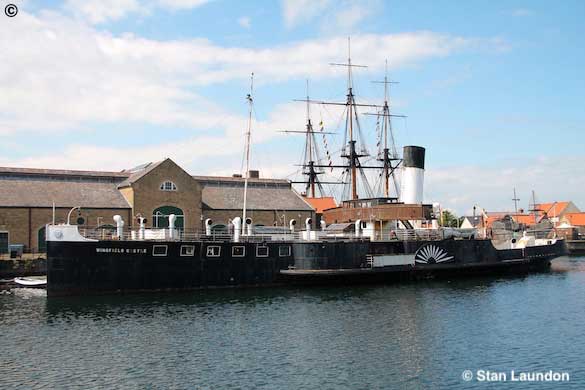
The Wingfield Castle, which was built by the yards of Sir William Gray in the town, was restored during the 1970's and had several owners before further restoration in her original building berth in Hartlepool. The PSS Wingfield Castle is open to the public and admission is free through the National Museum of the Royal Navy. Refreshments are available on board.
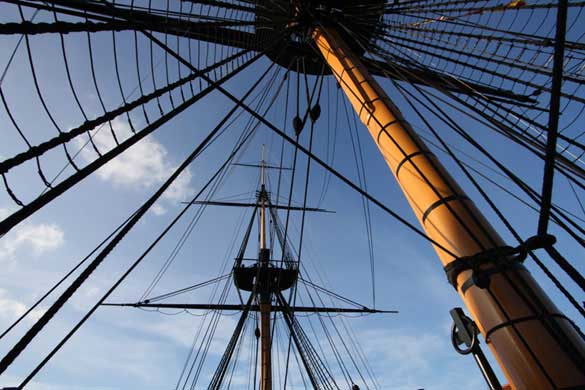
The masts of HMS Trincomalee which can be seen in The National Museum of the Royal Navy. HMS Trincomalee is the oldest British warship still afloat. With its towering structure and thundering cannons, is a perfect tribute to Hartlepool's seafaring tradition. Built in Bombay, India in 1817, the Trincomalee was brought to Hartlepool in 1987, where it has taken over 10 years to restore the ship to her former glory.
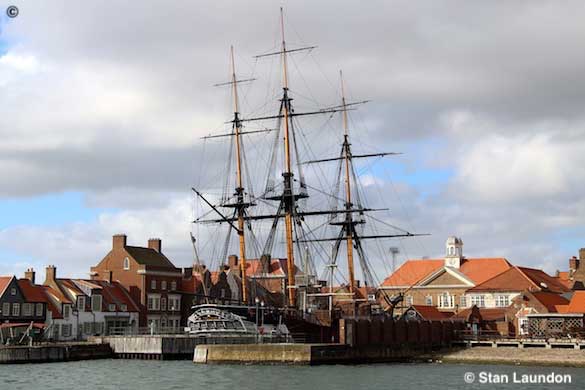
Another view of HMS Trincomalee at The National Museum of the Royal Navy.

Ward Jackson Park was opened in July 1883. It commemorates Ralph Ward Jackson, a Victorian entrepeneur and founder of West Hartlepool. The money to purchase the land was raised by public subscriptions. This was presented to West Hartlepool Improvements Commissioners, the forerunner of Hartlepool Borough Council. The former paid for the laying out the Park and its continual maintenance. Thousand of people joined the celebrations on the opening day. The march started in Church Street and, after a ceremony of unlocking the gates, circled around the Park to hear several speeches. Ward Jackson Park covers 7.38 hectares and provides "a place for recreation, of amusement and where young and old may enjoy themselves". The Park is listed as being of historical significance by English Heritage.
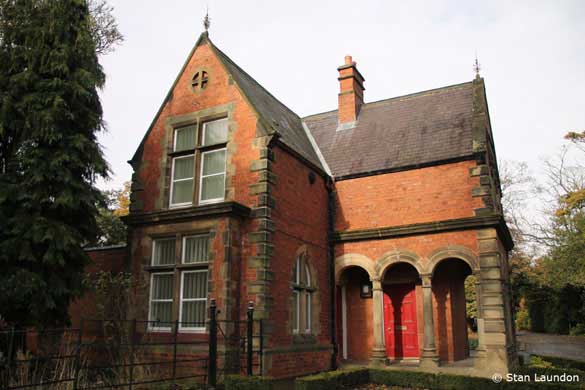
One of many Grade II Listed Buildings in the old West Hartlepool. This is the Park Lodge at one of the entrances to Ward Jackson Park. It was built in 1883 by Henry Suggitt the Park Manager.
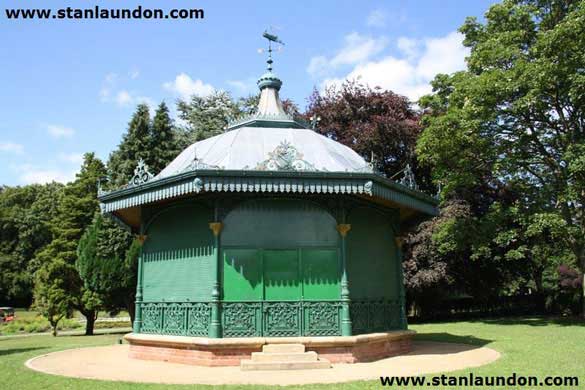
The Bandstand in Ward Jackson Park is a Grade II listed building. In the right hand column you can view a photograph of the decorative iron work on the top of the building which has the words "E Mare Ex Industria" (From the Sea Comes Industry) which is the motto for the town of West Hartlepool.
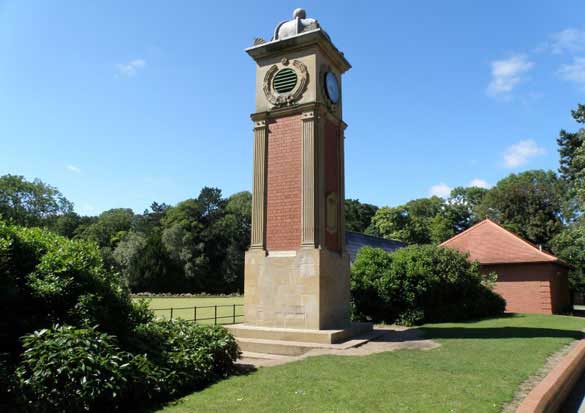
The Clock Tower, in Ward Jackson Park, Hartlepool which dates to 1921 and is Grade II Listed. There's a stone plaque on the tower which is inscribed: "The gift of Alderman John Brown J.P. Mayor 1902-3-4. In Consideration for others 1921."
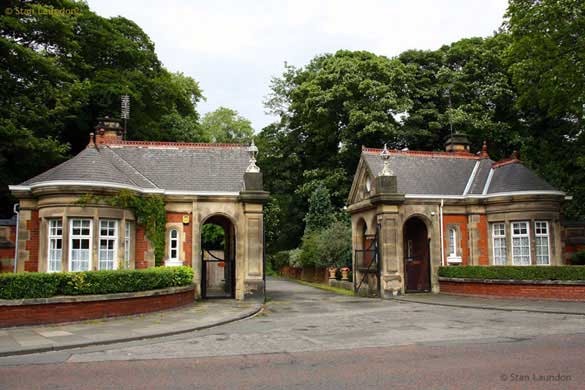
The East and West Lodges at the entrance to Tunstall Court, near Ward Jackson Park in Grange Road. The buildings are Grade II Listed and built around 1890 - possibly by T. Lewis Banks, of London, according to the Historic England website. Both lodges are now private dwellings.
An ornamental drinking fountain in the grounds of the old Gray Art Gallery and Museum in Clarence Road, Hartlepool. On the north face of the fountain is a plaque which is inscribed "Presented by Henry Withy, J.P., May 24th 1902". It was originally erected in Burn Valley Gardens moved to this location in 1979. It is Grade II listed and you can read more about it on the Historic England website. On the right hand side of the second photograph you can see "The Watcher" sculpture and there are more details about it in the right hand column.
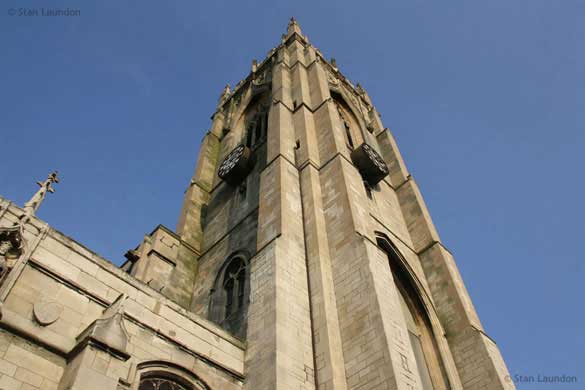
St. Oswald's Church, in Brougham Terrace, which was built in 1904. In my youth I was a choir boy at this grand old church.
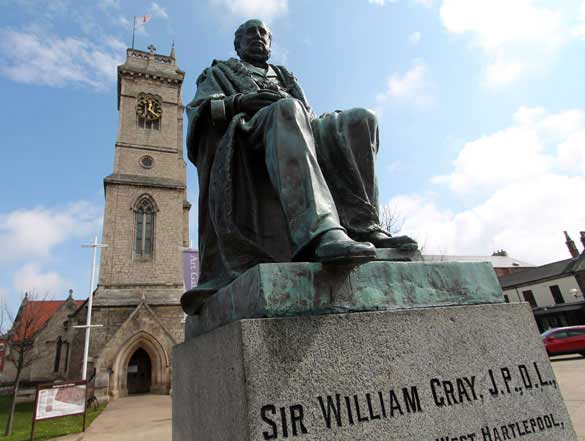
Sir William Gray, the first Mayor of West Hartlepool between 1887-8. The statue is situated in Church Square in front of the Art Gallery and Information Centre.
The former Wesley Methodist Church in Victoria Road was built between 1871 and 1873 by Hill and Swan. The building is another of the town's Grade II Listed Buildings and can be seen on the Historic England website. Recently it was used as a night club and is currently undergoing restoration. It is now owned by Jomast Developments and they have planning permission to convert it into a hotel with a restaurant and bar. In October 2014 The Victorian Society listed the Wesley Chapel in the Top 10 Most Endangered Buildings in England.
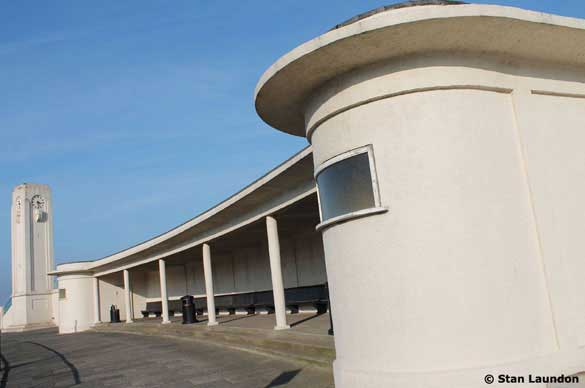
The Art Deco bus station and clock tower at Seaton Carew are Grade II Listed and both the bus terminus and tower were recently restored to their former glory.
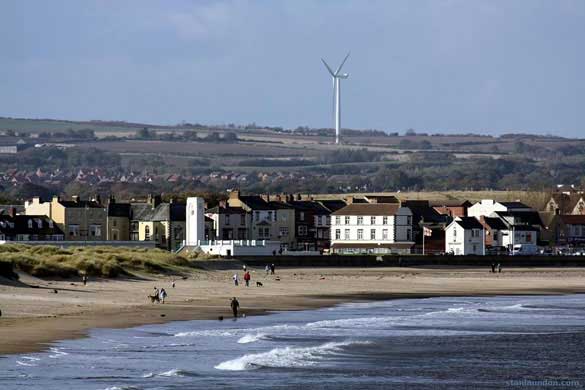
Seaton Carew, as seen from the North Gare, showing the Grade II Clock Tower with a modern wind turbine on the distant hillside.

For those who like to read about the history of Hartlepool, you maybe interested in a website that lists all the Grade I and Grade II listed buildings in town. Historic England has a comprehensive list of sites, and buildings, in Hartlepool and the surrounding area. One such building is the old Hartlepools Cooperative Society in Park Road, with its magnificent stonework. It was built between 1913-15.
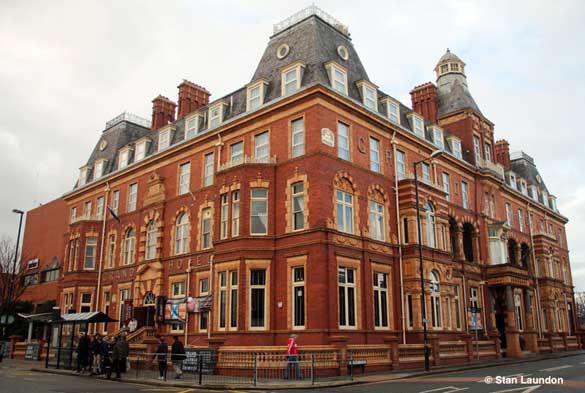
The Grand Hotel, in Swainson Street, is another Grade II listed building in town. Since being built in 1899 the hotel has been owned by several companies including Great Northern Railway, West Hartlepool Steam Navigation and Best Western. It is now owned by Shepherd Cox.
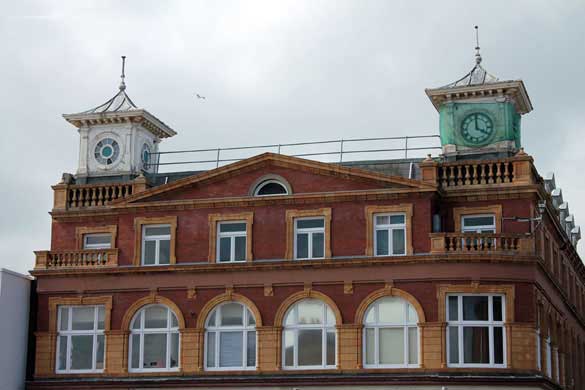
Another Grade II listed building in the old West Hartlepool. This is the former Binns Department Store - now Wilkinson's. It would appear that all the upper floors are not used these days. When it was Binns it was a hive of activity. It is sadly in need of some restoration. The building might have been built in 1896 although no serious documentary evidence has as yet been uncovered to confirm, or deny, this claim.
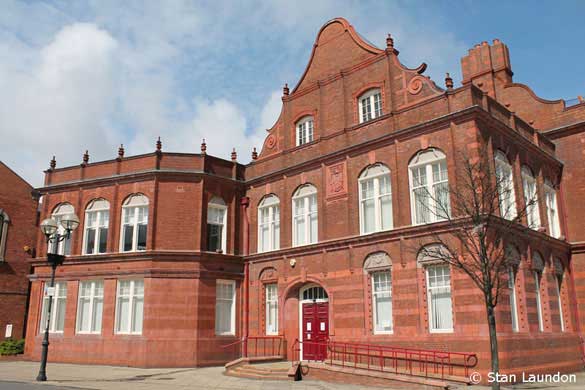
It's nice to know that the town has many Grade II listed buildings. This is part of the old Municipal Buildings in Church Square. It's no longer owned by the local council but are now private offices. You can see many of the listed buidings in Hartlepool on the Historic England website.
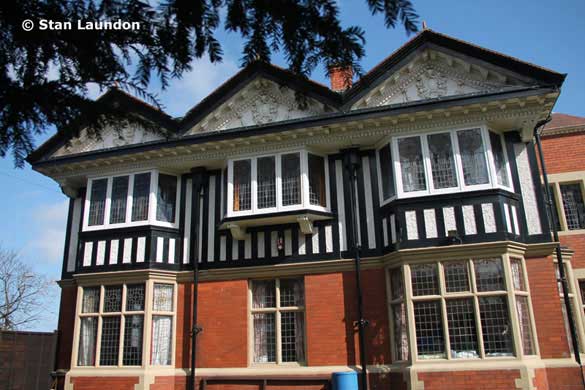
This Arts & Crafts House, Wilton Grange in Hartlepool, was built in 1902/03 by a local master builder, Henry Barnes. This Grade II listed building was, at one time, the training school for the Hartlepool Hospital's nursing staff. It has been in private hands since about 1976 and, fortunately, has remained in its original state. My sincere thanks to Mrs Sheila Bruce for allowing me access to this hidden gem - one of the most beautiful houses I have even seen. Photograph © Stan Laundon.

Once a grand old cinema, known as the Regal and later the Essoldo, it is just one of two old cinemas that remain in the town. The building is now used as a bingo hall. I'm told some of the original seating is still in place on the upper level - although now recovered. The owners informed me that it was 'against company policy' to allow me inside to take photographs.
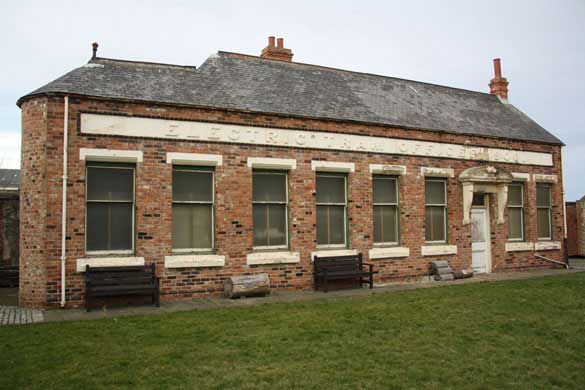
The Electric Tram Offices 1900 building was originally at the tram sheds depot in Lancaster Road and later moved, brick by brick, to its current site at the rear of the Gray Art Gallery and Museum.
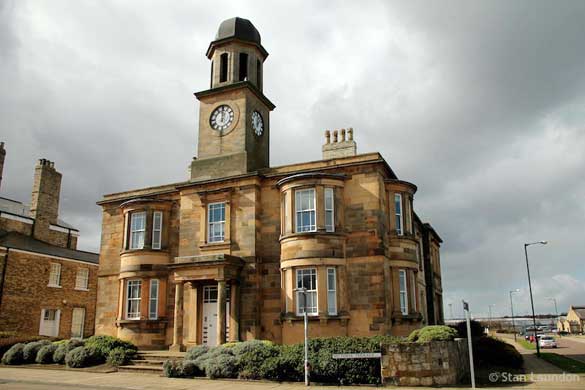
The Old Dock Offices, in Victoria Terrace, is a Grade II Listed building. It is now occupied with luxury apartments as part of the regeneration of Hartlepool Marina.
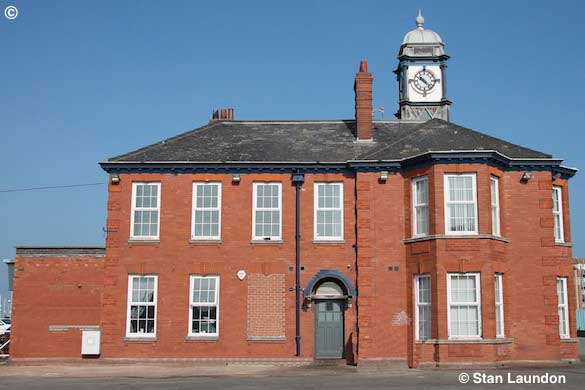
The Old Customs House in Hartlepool Marina. It was built in 1911 and had the duty of overseeing the collection of tax revenue at the dock. The building replaced the former Ship Hotel which was built around 1844, which had been used as a custom house since 1880 and was given over to commercial use after 1911.

"The Seaton Highlight" as it was known is a monument built in memory to all those who lost their lives at sea and dates back to 1839. It was initially situated in the Longhill area of Hartlepool - known to many, of a certain age, as Wagga.
Wagga was part of town which is, more or less, directly opposite the Belle Vue Social Club. At one time there was a small housing estate there together with shops, pubs and even its own social club - in fact, quite a thriving community. Some may recall the Steelworks Bridge, which ran from Wagga to Coronation Drive, in Seaton Carew.
There was also the story of the "Wagga Sunset" or "Wagga Moon" which was the glow from the slagheap of the steel works visible in the night sky. Then there was a more recent phenomenon of a 'wagga dot.' There seems to be conflicting reports as to exactly what a wagga dot is. Some say if you had a spot on your face, and you came from Wagga, it was a wagga dot or perhaps it was simply a tattooed dot on your cheek, or the backs of your hands.
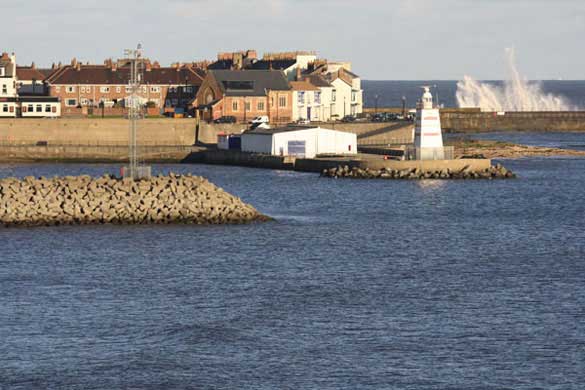
Three Piers - the Banjo Pier in the foreground which used to be in old Middleton, the Pilot's Pier, with the lighthouse in the centre, and the New Pier (Heugh Breakwater) with a few waves crashing over it, in the distance.

Middleton Pier - photograph copyright © Stan Laundon. From 1854 to 1952 old Hartlepool and Middleton were connected by a ferry service using 35 feet long passenger boats. The last ferry stopped soon after the last true ferryman, Bull Boagey, slipped on the ferry steps, cracked his head and died in 1951 while returning from a fishing trip. The ferry provided an important means of getting to work for Hartlepool folk employed in the boat yards that sprang up on Middleton beach from the 1800's.
Middleton Village, which has been long demolished, was named after John Middleton, a prominent local Methodist and friend of John Wesley. Wesley visited and preached in the High Street six times from 1759 to 1790. Middleton Village was at the lower part of Middleton Road in the town - passing Navigation Point at the Marina entrance - and towards the sea. The Small Crafts' Association Club is the only original building left in old Middleton. It was previously the Prince of Wales public house.
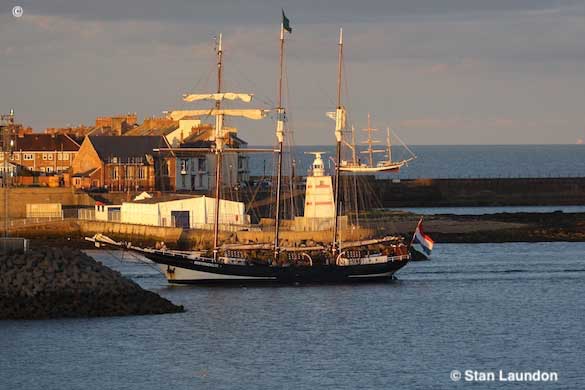
Memories of the Tall Ships' Races when they visited Hartlepool for four days back in August 2010. At that time I had great views from my apartment overlooking Middleton Beach and took advantange of the wonderful sights. I don't have that apartment anymore but I still have some wonderful memories.

If you'd like to take a memorable trip through Hartlepool during 1951 be sure to see "Boy And Bicycle" a film by Ridley Scott on the British Film Institute website - it will certainly take you back.
Polite Notice: All photographs on this page are © Stan Laundon, unless otherwise stated, and must not be copied or reproduced in any way without prior written permission.
Hartlepool Monkey: A folk song, which was written by Alan Wilkinson and sung by the Teesside Fettlers, tells the story of "The Hartlepool Monkey" appears on their CD called "Noting The Changes" which is still on sale through various sources on the internet.
Homepage / Andy Capp / Bands / Books / BBC Radio Teesside / Contact / Country Time / Flying Scotsman / Globe Theatre / Hartlepool / Hartlepool Monkey / Hartlepool At Night / Hartlepool History / Hartlepool Photography / Jerry Reed / Johnny Cash / Laundon / Links / Memorabilia / Memories / Middlesbrough / NYMR / Old Hartlepool / Rink / RNLI / Search / Seaton / Stars / Steam / Tornado / Wembley
